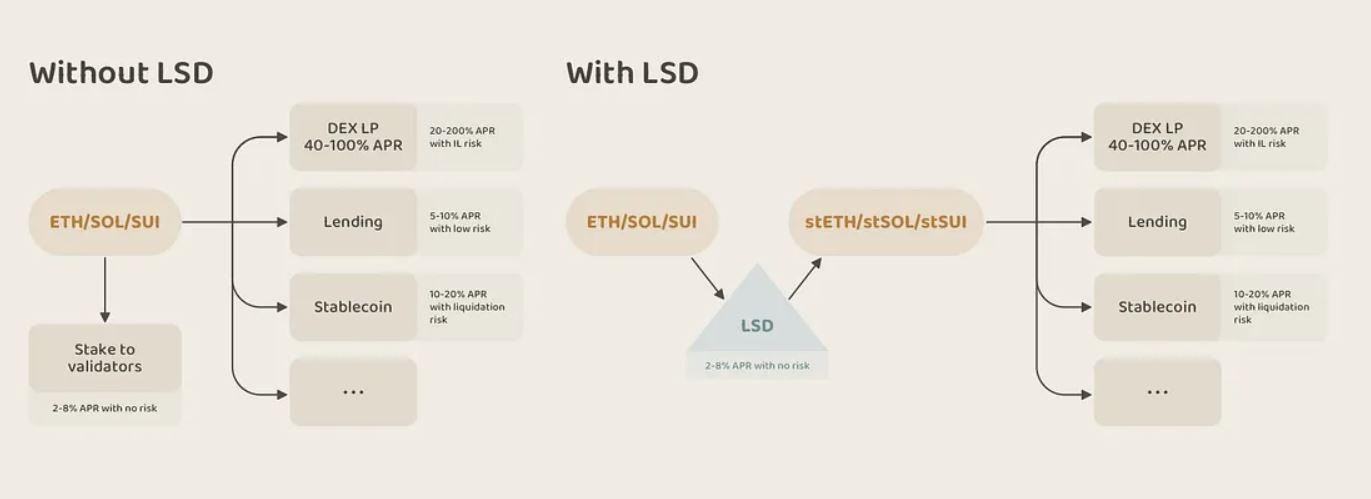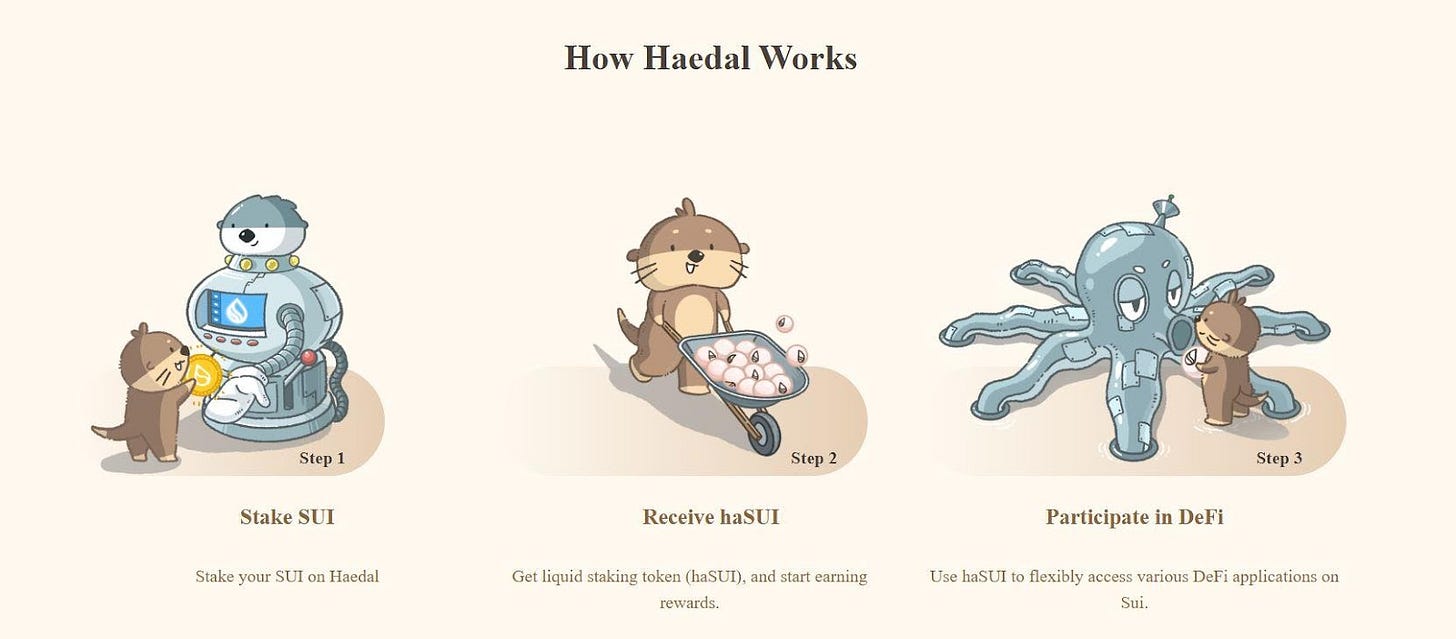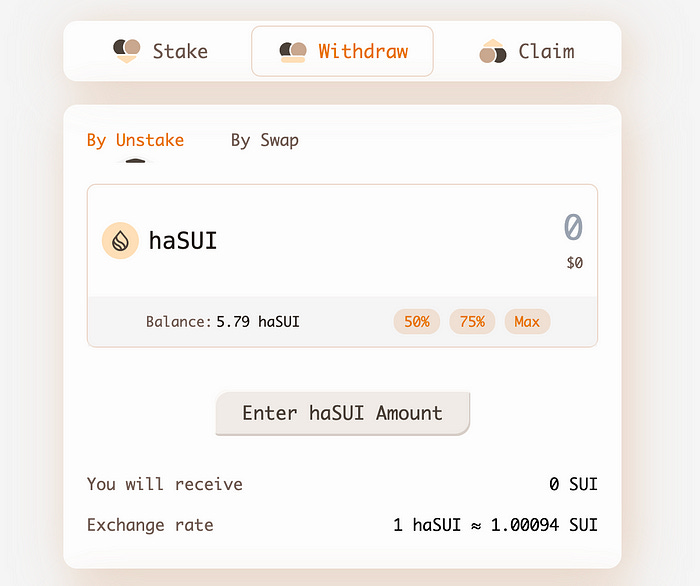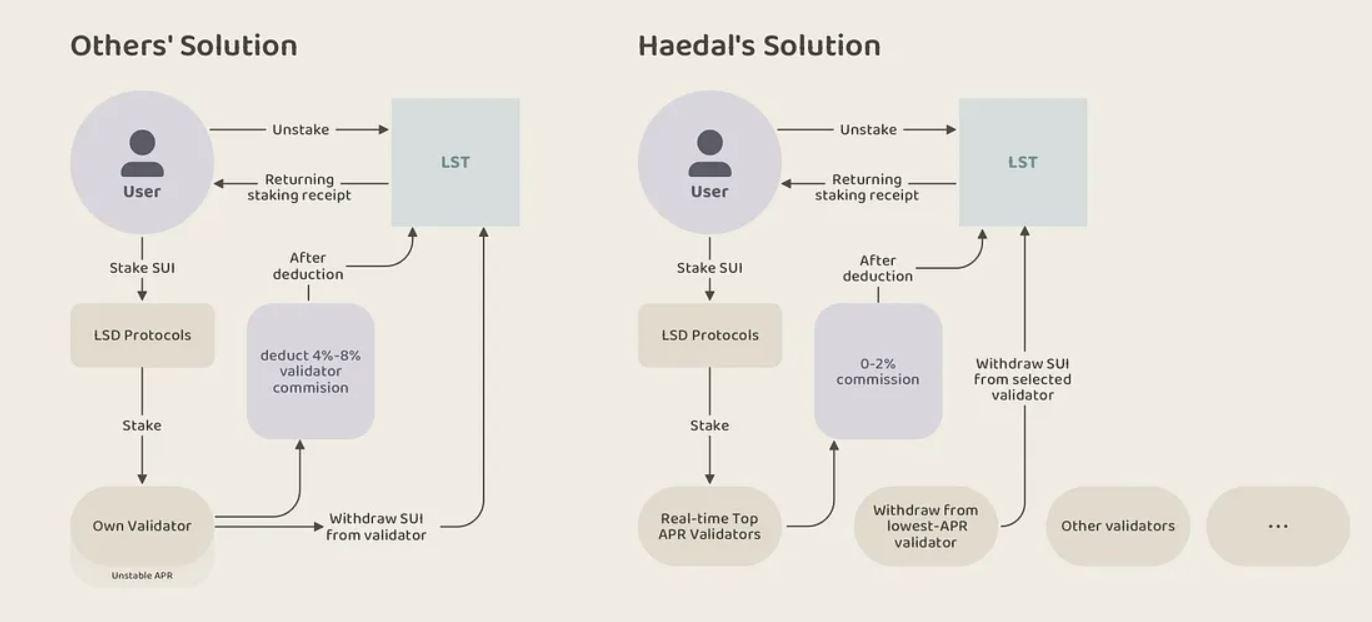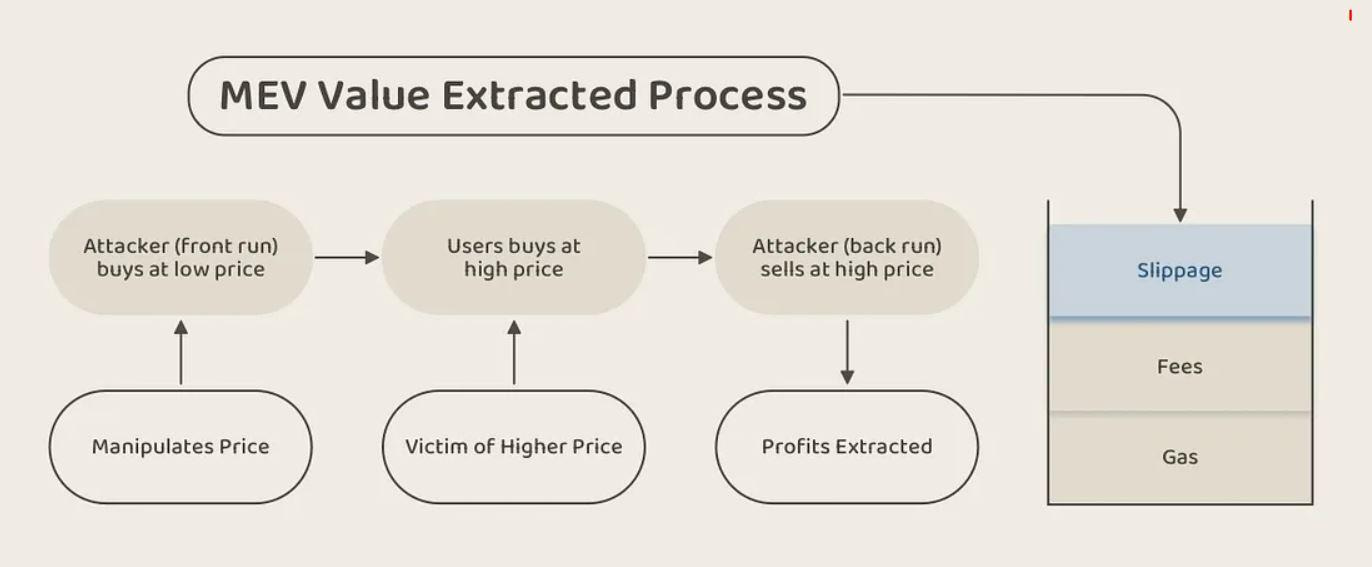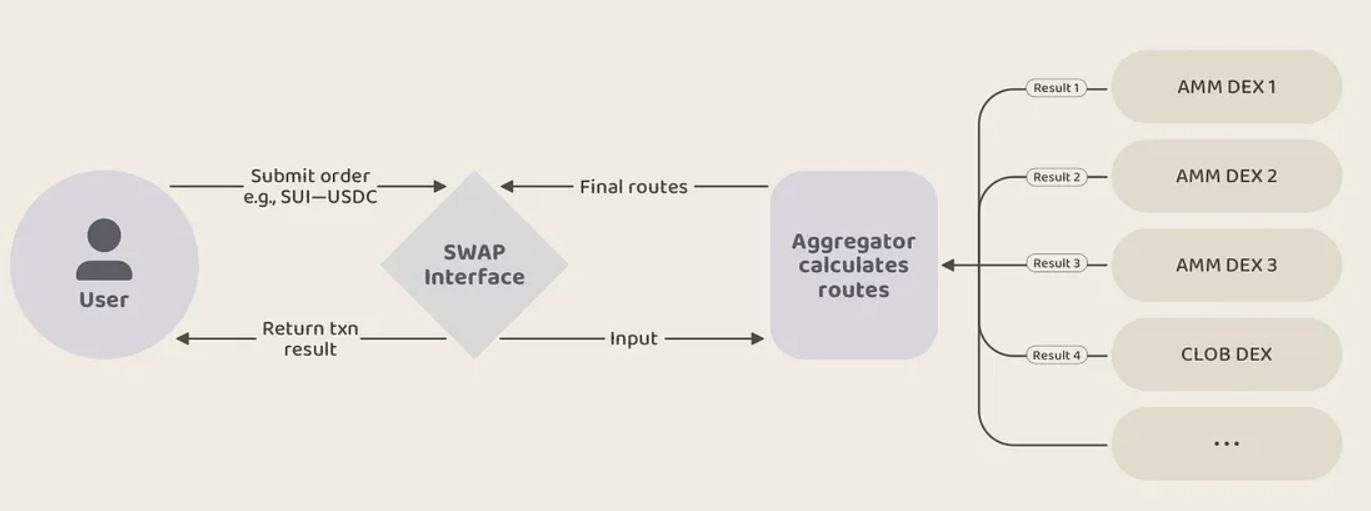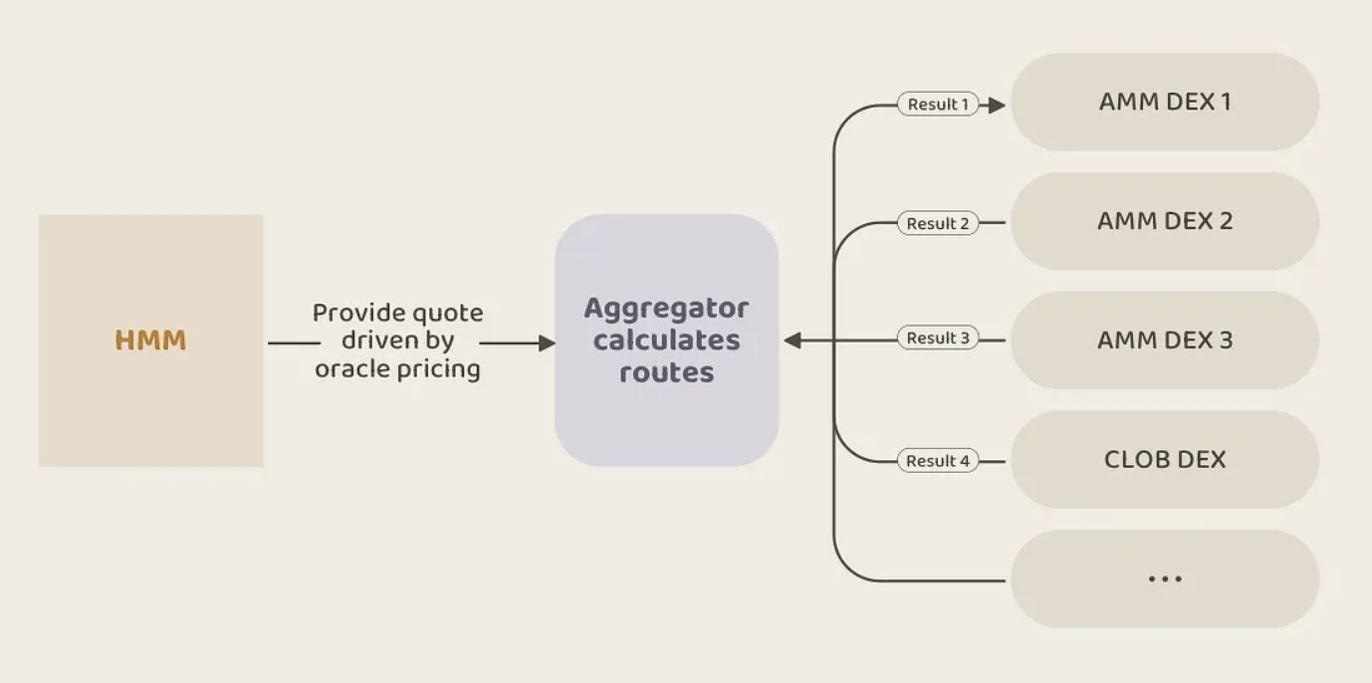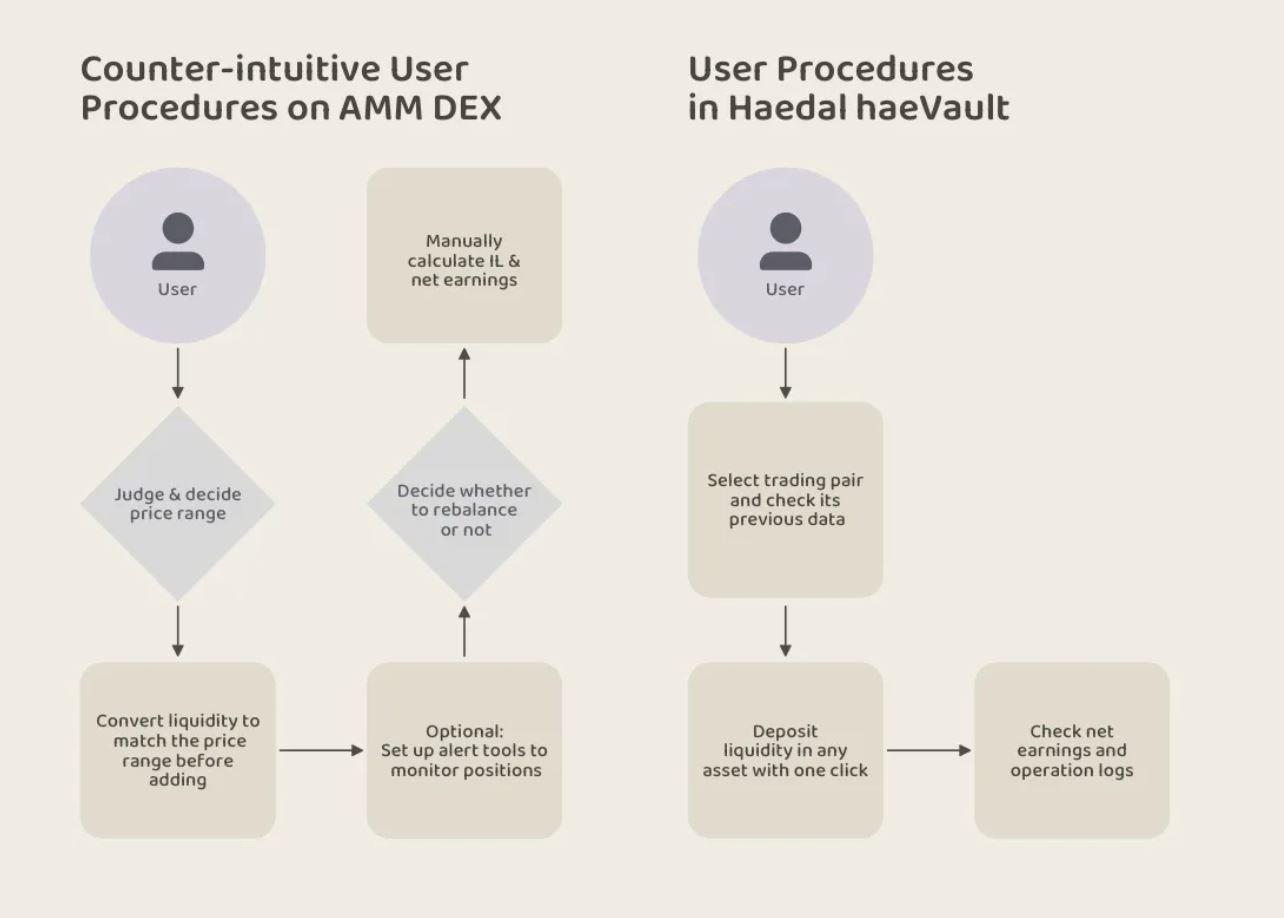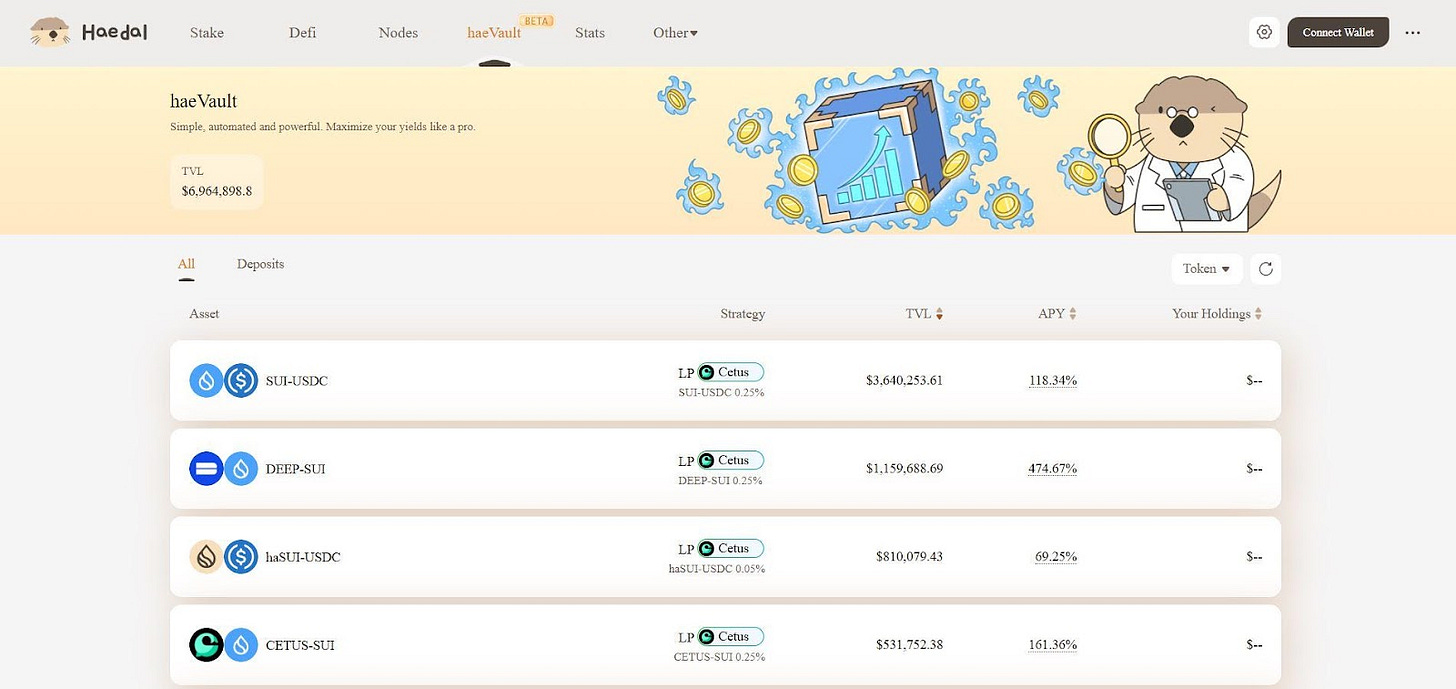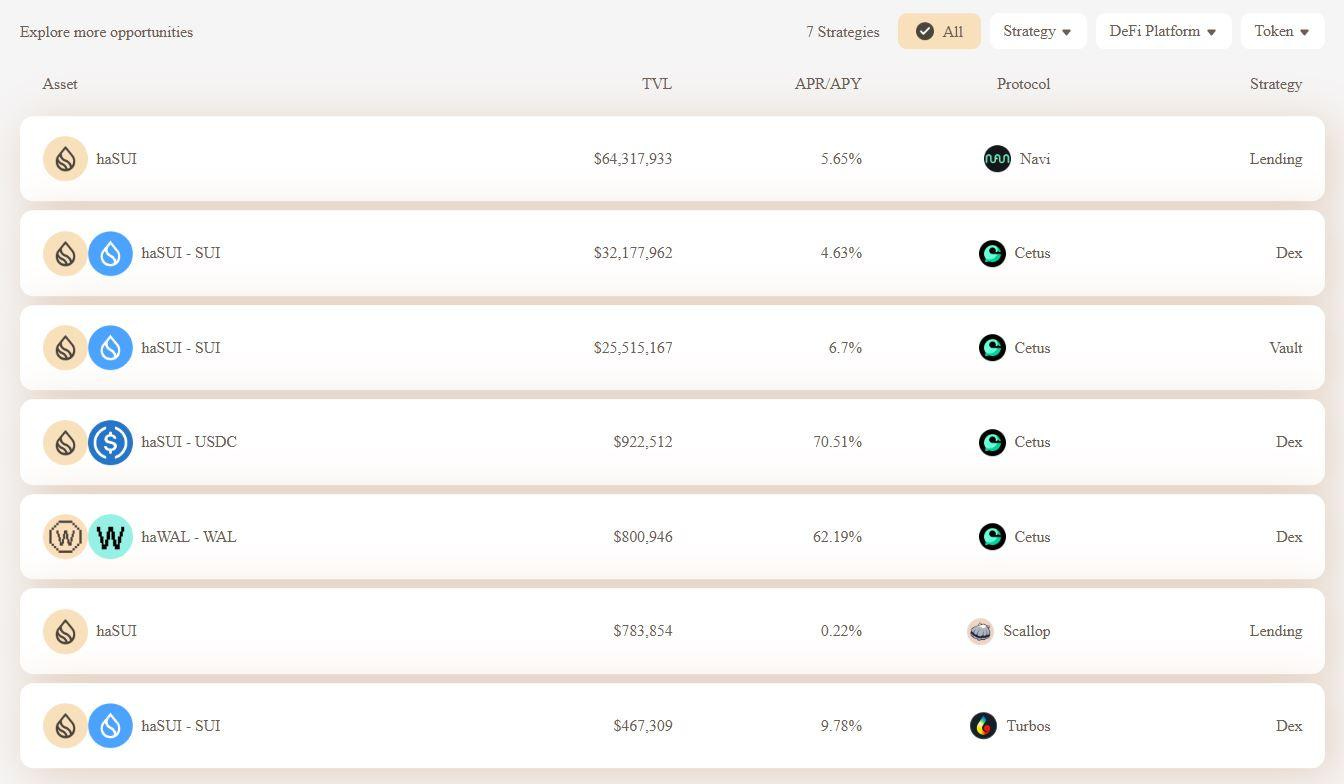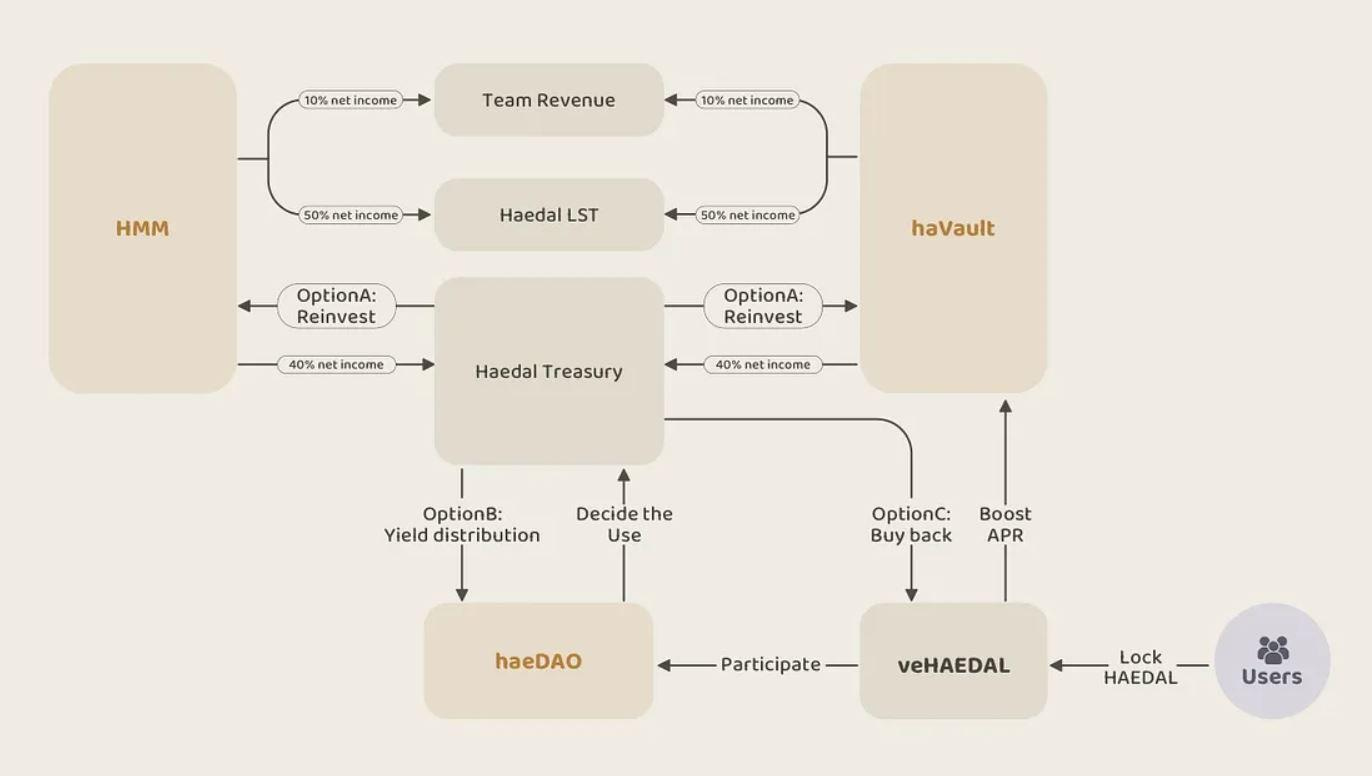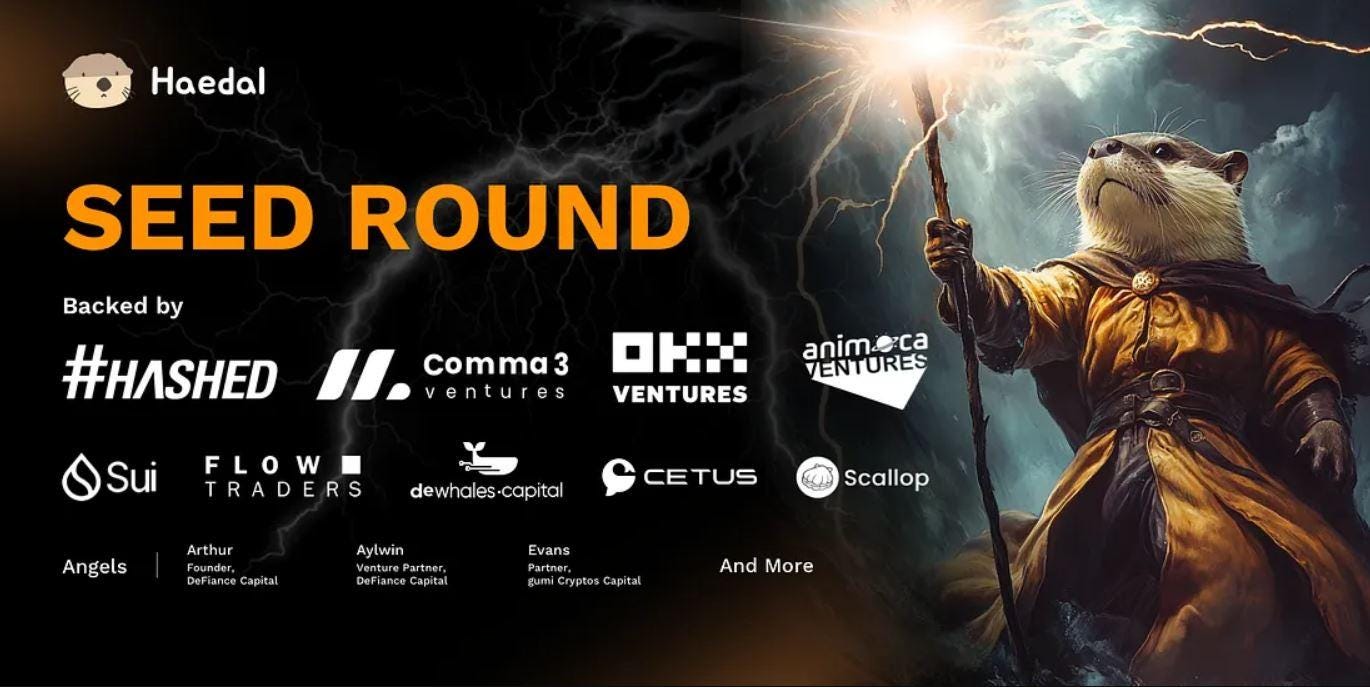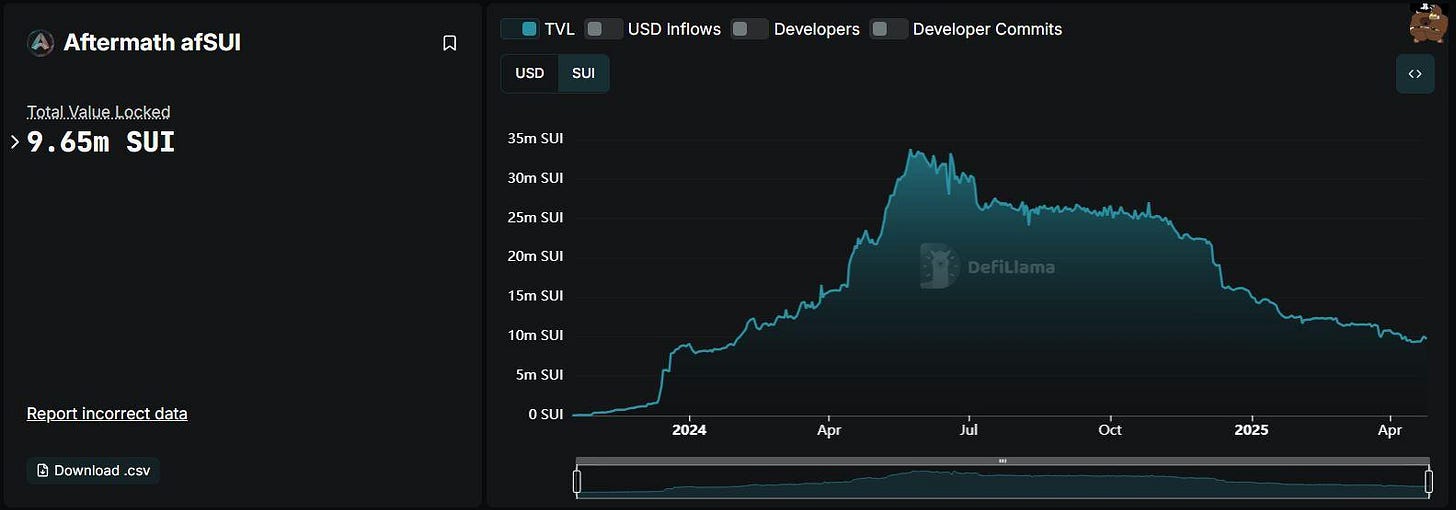Haedal Explained: Gearing up to Rule Sui's DeFi Territory
Disclaimer: The content presented in this article, along with others, is based on opinions developed by the analysts at Dewhales and does not constitute sponsored content. At Dewhales, we firmly adhere to a transparency-first philosophy, making our wallets openly available to the public through our website or DeBank, and our articles serve as vehicles for self-expression, education, and contribution to the ecosystem.
Dewhales Capital does not provide investment advisory services to the public. Any information should not be taken as investment, accounting, tax or legal advice or as a recommendation to purchase, sell or hold or to pursue any investment style or strategy. The accuracy and appropriateness of the information is not guaranteed by Dewhales Capital.
1. Overview
2. Architecture, components, and features
3. Team
4. Tokenomics
5. Partners and backers
6. Development, roadmap, and future steps
7. Potential competitors
8. Community
9. Final thoughts
10. References
1. Overview
Haedal started its journey from winning Sui's liquid staking hackathon in late 2023. It’s a liquid staking protocol natively built on Sui, allowing anyone to stake their $Sui tokens to contribute to the governance and decentralization of the Sui blockchain. In the meantime, users will get $haSui as the liquid staking token in return so that they can continue to participate in various DeFi activities to earn additional income with their LST liquidity. In a nutshell, liquid staking services on Haedal provide users with benefits like:
Easy staking (one-click liquid staking): Users can spread their stake across multiple validators with a single-click.
No lockups: Easily unlock your staked assets without going through long waiting periods.
High DeFi yields: Use $haSui to earn additional DeFi yields while enjoying the underlying $Sui staking rewards.
Haedal also supports staking $Wal for $haWal to power the Walrus liquid staking. While Sui Network is a high-performance layer 1 blockchain for scalable smart contracts, Walrus Protocol is a decentralized storage protocol built on Sui, specializing in data storage solutions. They share ecosystem resources but serve distinct roles: Sui nodes validate transactions, while Walrus nodes manage storage. It's worth noting that the $Wal token is also launched on the Sui network.
On top of its liquid staking protocol, Haedal is also building a series of novel products including Haedal Market Maker and more, which generate continuous additional on-chain yields for Haedal and its LST ecosystem. So Haedal serves as a core pillar of the Sui DeFi by merging native liquid staking and yield strategies with user-friendly accessibility.
2. Architecture, components, and features
With Haedal, users don't need to care about the technical implementation regarding validators. They can simply delegate their $Sui tokens to liquid staking protocols to stake to validators to earn consensus rewards. More importantly, the value of their assets will not be completely locked as inactive status. Instead, the value can be released back to the ecosystem in the form of $haSui liquidity, which can be used in a variety of DeFi scenarios. Users don't need to make tradeoffs between staking in validators and providing liquidity in DeFi protocols. With liquid staking, they can achieve both or even multiple in a DeFi composability manner.
Haedal’s StakeNet conducts 24/7 monitoring over all validators across the entire network and is always ready to obtain the best on-chain yields for its users. Users can stake $Sui through Haedal's infrastructure, and it will mint $haSui based on the current epoch's (~ 24 hours) $haSui/$Sui ratio. Haedal will delegate the staked assets to validators to start earning staking rewards. When staking, users can choose between two modes: "Automated" and "Manual".
Automated: With the "Automated" stake mode, the user's staked $Sui tokens will be automatically distributed across multiple validators with stable and efficient performance selected by a reliable algorithm. The distribution will be periodically re-adjusted.
Manual: The "Manual" stake mode allows users to select specific validators from the list by themselves for direct staking.
Haedal calculates its liquid staking APY by comparing the current conversion rate of $haSui/$Sui with the rate from 48 hours ago. This method reflects the growth rate of $haSui relative to $Sui over the past two days, providing users with an accurate measure of the protocol's yield performance. This calculation also helps in tracking the yield accumulation and gives users insight into their potential returns over a specific period.
Similar to the staking, users have two options for unstaking (withdrawing) their assets:
Regular unstake: Users can unstake their $haSui to get back $Sui freely. The regular unstake operation incurs no fee, but requires a waiting period of 1-2 epochs to cancel the stake.
Instant unstake (by swap): Besides the regular unstake, Haedal also supports SIP33 on Sui to allow for instant unstake. The SIP33 allows inactive StakedSui objects to be redeemed immediately. This creates the premise for instant unstake. Users can opt for instant unstake with a small unstaking fee when they need their $Sui urgently. The instant unstaking fee is currently set as 0.02% of the unstaking amount of each request.
As mentioned earlier, Haedal is not just a simple LST protocol, since it aims to generate additional yields for the users. To increase the yield (APR), LSD protocols should consider both reducing costs and increasing revenue.
Reducing costs is straightforward. We should just learn to be a smart staker, selecting the most cost-effective validators with the highest yield rates. This is determined by two factors: the validator’s APR and the commission rate they charge. The base APR we achieve usually depends on these two dynamic factors.
Currently, most LSTs on Sui are validator-based, meaning each LST token is tied to a specific validator. While this is not inherently problematic, it doesn’t guarantee that the validator’s APR is the highest, and most validators charge a commission rate of 4–8%, further diminishing the final APR of the LST.
Haedal, on the other hand, offers dynamic validator selection. It continuously monitors the state of all validators on the network and selects the validator with the highest net APR during the staking process (these validators typically charge a commission of 0–2%). Similarly, when users unstake, Haedal selects validators with the lowest APR to withdraw from. This dynamic approach ensures that $haSui consistently maintains the highest native APR for LSTs in the entire ecosystem.
Although cost reduction helps Haedal achieve higher APRs within the system’s constraints, it cannot exceed the economic model’s emission limits. On the other hand, increasing revenue involves discovering other sources of income for the protocol, particularly through the vast DeFi ecosystem.
As you know, there are almost only three stable and sustainable sources of income in the crypto world: staking, lending/borrowing, and trading. LSD protocols are naturally well-positioned to capitalize on trading. Just like Jito, a famous LSD project on Solana, chooses to step into the trading aspect to improve its revenue performance, but from a MEV angle.
On-chain transaction costs are high. Users face slippage, transaction fees, and gas fees in every transaction. MEV services, such as those provided by Jito, capture profits from user slippage. Jito has provided a highly effective MEV infrastructure for Solana validators, optimizing transaction order to capture MEV opportunities and distribute the resulting profits.
However, Haedal’s team believes MEV is a product of DeFi’s immaturity. If a protocol gets addicted to MEV and treats it as a fixed trading cost, it risks making on-chain trading costs ten or even a hundred times higher than centralized exchanges (CEXes), making it impossible to compete with centralized products. MEV-induced slippage is an additional cost that users don’t want to bear or accept.
Moreover, based on the recent community and developer discussions about MEV on Sui, it’s clear that they have an anti-MEV stance. Therefore, Haedal has proposed a new solution: extracting value directly from trading fees brought by transaction flows. They call this product Hae3.
Hae3: Extracting value from ecosystem transaction flows
Sui’s on-chain transaction volume has been growing rapidly in recent quarters. According to data from Defillama, since Q4 2024, Sui’s DEX trading volume has far exceeded that of older mainstream ecosystems like Polygon, Tron, and Avalanche.
Top 10 chains by DEX trading volumes as of April 21 (Source: DeFiLlama)
Currently, the majority of trading on Sui is initiated through aggregators (as is the case in most ecosystems). Users initiate trades, and various AMM DEXes (like Cetus) and CLOB DEXes (like Deepbook) supply quotes based on pool/order status. The router system calculates the optimal path and routes the transaction to finally complete the order.
With this backdrop, Haedal proposes two strategies to capture trading flow and extract profit from it:
Strategy 1: Haedal Market Maker (HMM), embedding oracle-based market making algorithms
HMM is a specially made automated market maker which can not only maximize the capital efficiency on Sui but can also boost yields for all Haedal users.
Unlike many other AMMs, HMM is driven by protocol-owned liquidity initially funded by Haedal itself. So actually HMM isn’t meant to welcome external LPs, at least in the early stages. HMM was designed to amplify mainstream asset liquidity on Sui and unlock new yield potential for Haedal's LST economy.
This way, HMM operates with extremely high capital efficiency, meaning it does not require a large amount of TVL to maintain decent liquidity depth. The initial funds will be seeded by the Haedal team, with profits reinvested continuously to scale the liquidity.
In other words, HMM’s profits will be fully owned by the Haedal Protocol, and all distributions will be aligned with the protocol’s best interests. This is manifested as follows:
$haSui Treasury: 50% of HMM’s net profits will be periodically harvested and settled in the form of $Sui, which will be added to the $haSui treasury, ultimately contributing to the APR amplification of $haSui.
HMM reinvestment: A portion of HMM’s net profits will be reinvested into the HMM pool to continually increase its liquidity size. Initially, this percentage will be 40%, gradually decreasing over time to balance between liquidity efficiency and yield distribution.
Haedal staking rewards: There will also be a portion of the net profits reserved for Haedal token stakers. The percentage will start at 0% and gradually increase over time as the HMM pool reaches liquidity saturation.
Haedal protocol revenue: The team will take a 10% cut of the net profits as Haedal’s protocol revenue, stored in the protocol treasury, to ensure the long-term sustainability of Haedal.
As of today, HMM beta version has been successfully deployed on the Sui mainnet. It has been integrated by Cetus Aggregator for the beta stage. The AMM has significant advantages in the following aspects:
High capital efficiency: HMM can achieve equivalent capital efficiency that can be compared to the liquidity in ultra-narrow ranges in CLAMM pools, while maintaining higher flexibility.
Low drawdown: Leveraging Sui’s robustness and high TPS, HMM can swiftly adjust the liquidity distribution in pools by capturing price fluctuations in volatile pairs (e.g., SUI-USDC), effectively controlling risks and minimizing the drawdown caused by volatility.
Anti-MEV: HMM is naturally resistant to MEV. It can effectively defend against various types of front-run and sandwich attacks, ensuring uncompromised yield performance.
HMM’s superior advantages in DeFi adoption are mainly achieved through the following technologies and mechanisms:
1. Dynamic liquidity concentration:
Unlike the standard constant-product curve (x * y = k) used by common AMMs, which provides liquidity across the entire price spectrum from 0 to infinity, concentrated liquidity supplies capital within a specified range that is most likely to be used by trades. This can dramatically improve capital efficiency, leveraging limited capital size to achieve the maximum liquidity depth.
There are more than one method to achieve liquidity concentration, such as DLMM, which divides the price curve into different bins, and CLAMM, setting a large number of ticks on the price curve. The liquidity is then allocated into the bins or tick range near the central market price, which forms a non-linear relationship between price and liquidity. However, these approaches also have their drawbacks, like liquidity sometimes becomes rigid, when the price deviates from the expected central market price, effective liquidity quickly diminishes, resulting in increasing slippage.
To address this, Haedal applied non-linear adjustments to the standard curve through an additional leverage factor, making the depth distribution of the price curve more aligned with the real market conditions, and also more flexible. By dynamically adjusting the leverage factor, the protocol can flexibly balance where liquidity is concentrated, the proportion of assets in the pool, and the swap slippage.
2. Proactive pricing driven by oracles:
As mentioned earlier, while concentrated liquidity achieved through CLAMM and DLMM can improve capital efficiency, the liquidity rigidity problem that comes with it does increase the risk of impermanent loss for LPs to a certain extent. To minimize the IL risk in HMM, we adopt oracles for the price feeding to liquidity usage.
Sui’s network characteristics naturally make it feasible and smooth for the high frequency oracle price feeding on Sui. This ensures that the oracle price feeds are highly responsive to the market price movement and closer to the real-time market fair price. From a trading perspective, applying liquidity with oracle-based prices can complement existing AMMs and orderbooks within the ecosystem, collectively optimizing the swap price and trading experience for Sui users.
For LPs of HMM, since the liquidity pool doesn’t rely on arbitragers for price adjustment, the impermanent loss will be minimized. In fact, impermanent loss can even be reversed into “impermanent profit” through the successful implementation of buying low and selling high. HMM will primarily use Pyth Network for the native price feeding, pulling data by a defined time interval (approximately every 0.25 seconds for now).
3. Inventory management strategy:
From another perspective, HMM is also an inventory management strategy designed to maintain the simplicity of the classic constant product model, where the value of two assets in a pool always remains equal.
To maximize profits while sticking to the above characteristics, the protocol rebalances the pool through the liquidity replenishment. When the amount of one asset in the liquidity pool decreases, the HMM algorithm automatically adjusts the price of that asset, expecting to repurchase the missing inventory from the market. This liquidity adjustment happens with each transaction. For example, when the amount of asset A in a pool is less than asset B, HMM will reduce pool liquidity for buyers of A and increase pool liquidity for sellers of A to maintain balance. Essentially, it will add a temporary premium to asset A. This incentivizes traders to sell the lacking asset to the pool while preventing them from buying, ensuring the pool’s balance quickly returns to equilibrium status.
Haedal’s ultimate goals for HMM include, but are not limited to:
Improving liquidity depth of the ecosystem: HMM will enhance the near-market-price liquidity depth of $Sui and other mainstream assets on Sui. The liquidity is naturally anti-MEV, protecting users from MEV attacks.
Encouraging organic staking: As $haSui’s yields are significantly boosted, there will be more users interested in native staking on Sui. With more $Sui to be staked, it is beneficial to the security enhancement and decentralization of the Sui network.
Exploring more trading opportunities: The HMM running and $haSui’s APR growth will stimulate more transactions around $haSui, $Sui, and other mainstream assets, generating more public opportunities for trading and arbitrage. This will drive further growth in the trading volume of the Sui ecosystem.
Strategy 2: haeVault, enabling DEX users to LP like CEX market makers
A major issue with current DEX products is the high entry barrier for regular users to become LPs. In mainstream CLAMM algorithms (currently the most adopted AMM algorithm on Sui), if a user wants to provide liquidity to the $Sui-$USDC pool, here is what they need to take care of:
Make subjective decisions about price ranges
Adjust liquidity according to the set range
Constantly monitor whether their positions are “out of range”
Decide whether to rebalance their positions or not
haeVault is a powerful tool that enables users to provide liquidity and maximize on-chain returns effortlessly. It empowers users by giving them access to professional-level LP strategies without the complexity. The benefits offered to users by haeVault includes:
Seamless liquidity provision
Automated rebalancing strategies
Higher LP yields with minimal effort
Starting with DEX-based strategies, haeVault will support a series of different strategies in the near future that fit with users with different risk preferences. haeVault also creates an important source of protocol revenue that further boost Haedal’s LST economy and its long-term sustainability.
Unlike HMM, haeVault will be available to all users directly, and is naturally capable of attracting large amounts of capital. After accumulating sufficient TVL, haeVault has the potential to capture a significant portion of the DEX fee revenue for mainstream assets.
Last but not least, Haedal’s staking smart contracts and Move-based smart contracts have undergone audits by Movebit and OtterSec. These audits included detailed architecture reviews, extensive unit testing, and meticulous manual reviews.
3. Team
- Luke Shi is the co-founder of Haedal Protocol, where he leads business development, strategic partnerships, and investment planning. He formulates growth strategies, explores new opportunities, and manages capital market relations to align with the company's long-term vision. His role includes coordinating internal and external stakeholders, shaping the ecosystem, and preparing financing materials. Prior to Haedal, Luke specialized in product and sales empowerment at SUNMI Technology and software operations at SheenCity Digital. With a background in digital business intelligence and IoT, he brings cross-industry expertise to his work in Web3 innovation.
- Cedrick Vajarachitkul is the co-founder of Haedal Protocol, launching the project during the 2023 Sui Foundation Hackathon. He leads product development, focusing on financial modeling, user experience design, and team coordination to ensure smooth functionality. Previously, he worked as a business analyst at Bangkok Bank, supporting M&A in the IT sector, and held internships in investment banking and securities research.
4. Tokenomics
Haedal Protocol centers around a two-token architecture: $haToken and $Haedal.
$haToken stands for Haedal staked token, it is minted when you stake a token like $Sui or $Wal via Haedal's liquid staking infrastructure. This is a yield bearing token which represents your ownership and share of the corresponding total liquid staking value on Haedal. As the staking pool continuously earns validator rewards for securing the Sui network, the value of $haToken ($haSui, $haWAL, etc.) will appreciate versus $Sui or $Wal.
With their $haTokens like $haSui, users have various ways to generate more profit across Sui ecosystem:
Liquidity provision: Provide liquidity on DEX to earn continuous trading fee revenue.
Trading on DEX: It can be used on any decentralized exchanges or trading platforms to exchange for other crypto assets, serving as a main quote token on Sui.
Borrowing/lending: Users can lend $haSui to other users via different lending protocols on Sui to earn lending interest. It can also be used as collateral to borrow other mainstream assets on Sui.
Collateralized Debt Position (CDP): Used as collateral to mint stablecoin or other assets, thereby boosting capital efficiency.
It is worth noting that as described above, $haSui follows a value accruing model based on the liquid staking mechanism. Its conversion rate relative to $Sui is expected to continuously increase over time. However, in an open secondary market like DEX or CEX, the market price of $haSui mainly depends on user behavior and overall market conditions.
Since users can always unstake $haSui back to native $Sui tokens via Haedal’s liquid staking infra, $haSui has an inherent exchange rate support. If the price of $haSui price on secondary markets deviates significantly, traders and arbitragers will naturally engage in price correction, aligning the market price with the intrinsic value of $haSui.
Putting $haTokens aside, we now discuss the second token serving Haedal’s goals. HMM and haeVault will integrate deeply with the existing Aggregator & DEX systems, providing improved liquidity depth and reducing slippage for transactions on Sui. As the TVLs of these two products continue to grow, Haedal will capture a significant share of the trading fees revenue on Sui.
50% of the net profits will be used to boost the APR of Haedal’s LSTs. 10% will go to the team to ensure the long-term sustainability of the protocol, and 40% will be allocated to the Haedal treasury as Haedal’s protocol-owned liquidity.
Initially, this treasury will be reinvested into Haedal’s products to scale liquidity. As the product matures, the team will introduce haeDAO to manage the treasury, creating more empowerment for Haedal’s token and its community. This is where the protocol introduces the other token, $Haedal.
$Haedal tokens can be locked into $veHaedal to access all rights within haeDAO, which includes:
Management over Haedal Treasury: Decide the asset ratio of the treasury, liquidity distribution over different product modules or different protocols, reward distribution methods, etc.
Boost yields from haeVault: users’ weight in haeVault can be boosted to enjoy higher APR.
Propose & vote: Some major decisions of the protocol will be made through the DAO voting, such as key product directions, use of treasury, etc.
5. Partners and backers
Partners:
Traffic inlet: Sui wallet, Gate wallet, SafePal, Wave, 7k, Suiet wallet, Bitget wallet, Surf wallet, Cetus, OKX wallet, Martian Sui wallet, Nightly, HOP
DEXes: Cetus, Turbos, Flow X
Lending: Scallop, Navi, Mole
As Sui Network, its ecosystem, and Haedal itself mature, more and more integrations and partnerships will be ahead of the project, fueling its revenue, user base, and development.
Backers:
Haedal Protocol has raised one round, which was a seed funding closed on Jan 3, 2025. The fundraising was successfully completed with participation from industry-renowned investors such as Dewhales Capital, Hashed, Comma3 Ventures, OKX Ventures, Animoca Ventures, Sui Foundation, Flow Traders, Cetus, Scallop, and others.
6. Development, roadmap, and future steps
With recent milestones and record-breakings, Haedal’s development and growth trajectory looks promising. The most notable events and developments during recent months include:
Nov 15, 2024: Announcing HAEDALssador (Haedal’s ambassador program)
Jan 3, 2025: Completion of seed round fundraising
Haedal leverages the raised capital and new resources to support the further development of its liquid staking infrastructure and on-chain earning products focusing on the Sui ecosystem, and contribute to the sustainable competitiveness of Sui in the entire crypto world.
Jan 7, 2025: Introducing “Instant Unstake”
Jan 9, 2025: Introducing Haedal HMM (beta version)
Mar 14, 2025: Integration with 7K aggregator
Mar 17, 2025: Launching the beta version of haeVault (automated LP strategies for everyone)
Mar 25, 2025: Haedal officially integrated with Cetus Protocol as their first 3rd party LP strategy provider
Mar 27, 2025: Introducing $haWal
Apr 29, 2025: $Haedal to be listed on Bybit and Kucoin
Looking at some key numbers, Haedal has broken many records in Q1 2025:
+1.2M Sui staking rewards generated
HMM surpassed $400M trading volume
$haWal reached 3 million $Wal staked in one week
haeVault TVL surged to $7M
800K total accounts interacted with the protocol
Good news is that Haedal hasn’t stopped there, and these numbers are still continuing their uptrend.
Haedal will release products and modules to further maximize yield opportunities for all their users. To achieve this, firstly Haedal will continue to optimize its algorithm of validator selection and monitoring to maximize the staking yields it earned. More importantly, Haedal’s upcoming new products will all focus on generating additional yields to empower $haSui.
Also, Haedal will spend some time on active fine-tuning and optimizations to HMM based on the current beta’s public testing results and real-market performance in order to reach the maximum performance in their upcoming 1.0 version. Moreover, HMM will be integrated into more aggregators and taker platforms in this process.
Last but not least, as the product matures, the team will introduce haeDAO to manage the treasury, creating more empowerment for Haedal’s token and its community. The team is targeting to launch haeDAO in Q2. This will be the final piece of the entire Hae3 product portfolio.
7. Potential competitors
Generally speaking, every LST protocol on all networks could be considered a potential rival to Haedal. However, at least for now, Haedal should overcome its Sui-based competitors. Based on the quantitative and qualitative facts, this is something that seems pretty accessible for Haedal.
For example, in terms of numbers, the protocol is experiencing growing TVL. As of now, Haedal’s TVL ranks 4th among all the DeFi projects on Sui network.
When it comes to direct competitors, i.e. LST protocols on Sui, Haedal sits after SpringSui, but higher than Volo and Aftermath. The thing is, although SpringSui has currently more value locked on it, the TVL trends show us that this may soon end and Haedal has the potential to dominate the LST space in Sui ecosystem.
In terms of quality matters, while Haedal attracts value, HMM captures DEX fees, haeVault optimizes LP yields, and haeDAO provides governance power. This perfect synergy is missing in many LST protocols, positioning Haedal as a superior yield optimizer.
8. Community
In the past quarter, Haedal teamed up with leading Web3 platforms, including Binance Wallet, OKX Web3, Bybit Web3, Sui Wallet, Suiet and more, to launch a series of interactive campaigns. These initiatives were met with strong enthusiasm and participation from the community, reflecting growing excitement around Haedal’s products, vision and the TGE. More than 1.9 million users have participated in the collaborated campaigns so far. It is worth mentioning that, as of today, Haedal is followed by approximately 280k accounts across X and Discord.
9. Final thoughts
Pros:
1. Sui’s liquid staking market is underdeveloped, compared to Ethereum and Solana.
2. Sui is becoming a focal point for institutional adoption with support from the likes of VanEck and Franklin Templeton.
3. Haedal’s social accounts are very active, creating hype and strengthening the community.
4. Haedal is backed by top-tier investors, fueling its growth, development, and ecosystem expansion.
Cons:
1. Staking yields on Sui are relatively low. However, Haedal attempts to tackle this with its dynamic validator selection and innovative products to enhance its performance beyond other LSD protocols.
2. While looking promising, it’s still early to name Haedal the top LSD protocol on Sui. Moreover, Sui LSD ecosystem is relatively like a blue ocean, and more competitors may arrive and challenge Haedal’s dominance.
10. References
https://haedal-protocol.gitbook.io/haedal-protocol-docs
https://x.com/0x_nico0/status/1914501921198772610
https://discord.com/invite/haedalprotocol
Haedal links
Website | Docs | Twitter | Discord | Medium
Thanks for reading Dewhales Research! Subscribe for free to receive new posts and support our work.
We’d love to hear your thoughts on the article! Your feedback helps us improve and bring you the best content possible—it won’t take more than 2-4 minutes.
Also, this post is public, so feel free to share it!
Thank you so much! ❤️





